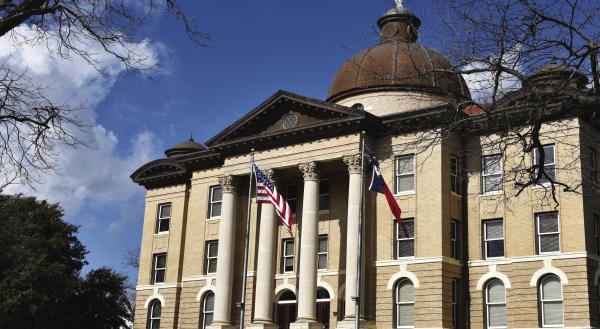County Updates
Many are aware that Hays County is one of the nation’s fastest growing economic regions, with expansion needs linked to its population size.
At the Hays County Commissioners Court meeting on Tuesday, April 25, Managing Director of Specialized Public Finance, Inc. Dan Wegmiller presented various financing options related to capacity that emphasized some of the pressing issues associated with the growth taking place.
Much of the growth in the county over the past 40 years has provided enough funding for projects that have improved the community.
According to Wegmiller, financing options for funding development and infrastructure and the tax rates used to obtain that money may be broken down into several types: operations and maintenance, road and bridge and debt service.
“The typical financing options are limited tax notes, certificates of obligations and general obligation debt,” Wegmiller explained. “General obligation debt is voter approved. The certificates of obligation and tax notes don’t go to voters for approval. The COs have a notice that is published, and tax notes are limited return. All of those obligations utilize the property tax pledge.” “The legislature restricts what is defined as debt, and that is somewhat evolving right now during the legislative session,” he added. “There are some bills that may impact that definition.”
The different obligation types can be utilized for specific purposes. Non-discretionary items that need to be moved through quickly can utilize obligation debt that does not require voter approval.
Of the three tools in the county’s arsenal, tax notes take the least amount of time to develop and implement. These go out every seven years and, therefore, influence what kind of projects may fall under limited tax notes, Wegmiller said.
Limited tax notes cover equipment purchases, technology and shortterm repairs, for example. COs and GOs are for long-term projects that often have a lifespan of up to 40 years.
“The tax rate for debt is what drives your ability to fund projects. That tax rate is tied to your property values [and] are really what drives how much capacity you have,” Wegmiller said.
“In 1980, Hays County was just above $80 to $90 million in property value as a whole county. Today, you’re at $40 billion,” he continued.
The valuation of property in the county changes each year. The increasing valuation numbers are made up of new value which includes, reappraisals and redevelopment. A rise in valuation means a rise in future capacity. He reminded the court that it has lowered the tax rate by approximately three cents, but due to the substantial growth in the county, the capacity has still grown and needs to be considered.
Hays County Commissioners Court Judge Ruben Becerra said that although no one, including himself, wants to pay more in taxes, the court has an obligation to those that live in the county “to allow them to move about in a safe environment which involves a lot. That’s roadways, that’s bridges, that’s law enforcement, that’s EMS and all of those things that we are directly tied to as a court [which] cost taxpayer dollars to operate.”
Becerra said he sees these costs as investments in the community.
Wegmiller said that he used the net valuation gain to create a capacity projection if the tax rate were to stay the same using 10% population growth occurring each year, arriving at at $140 million of new capacity as a benchmark.
“As you grow and that tax rate stays relatively the same, it produces additional revenue,” Wegmiller said, noting that revenue is used to pay for major projects or to pay off existing debt.



